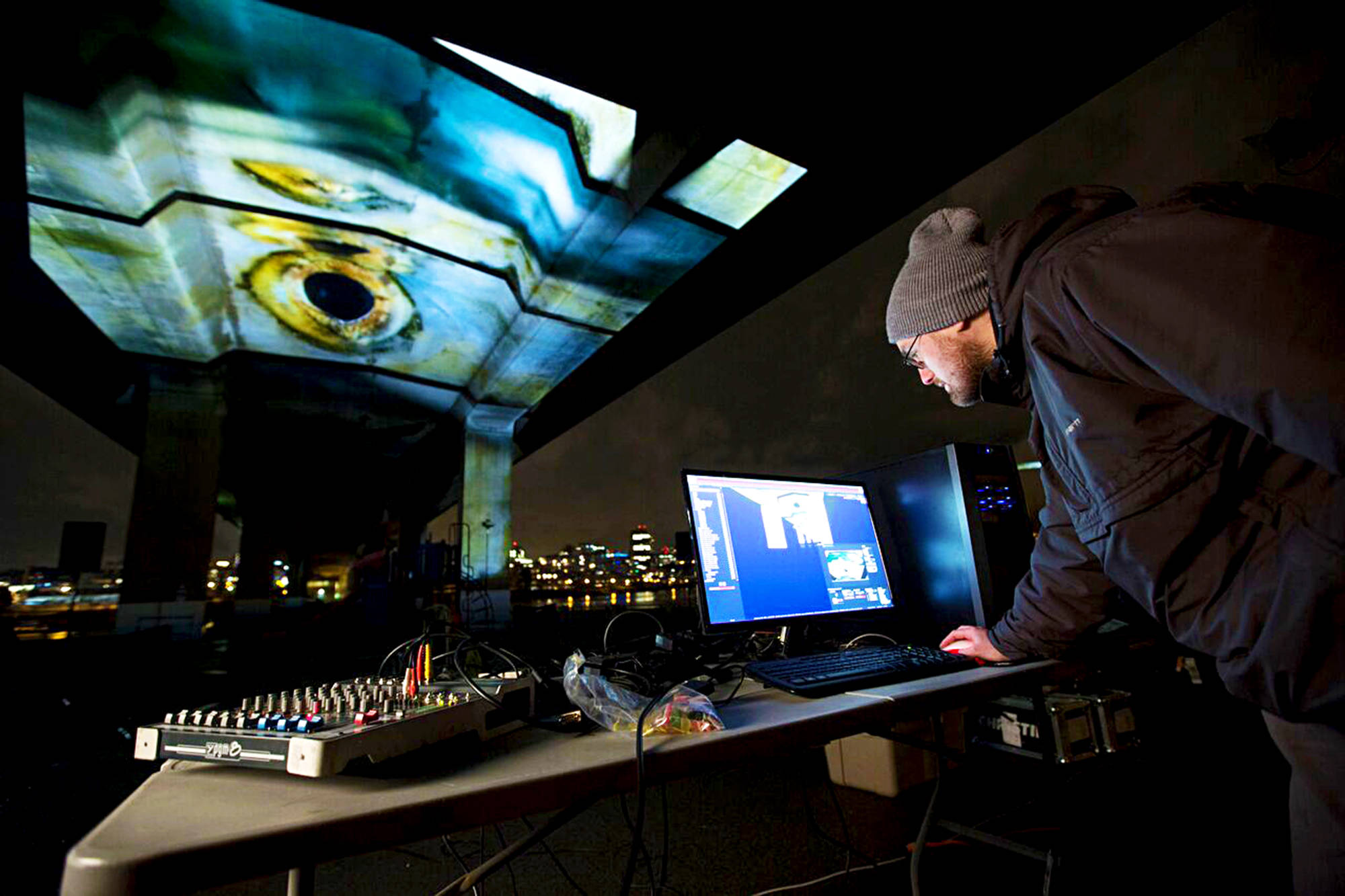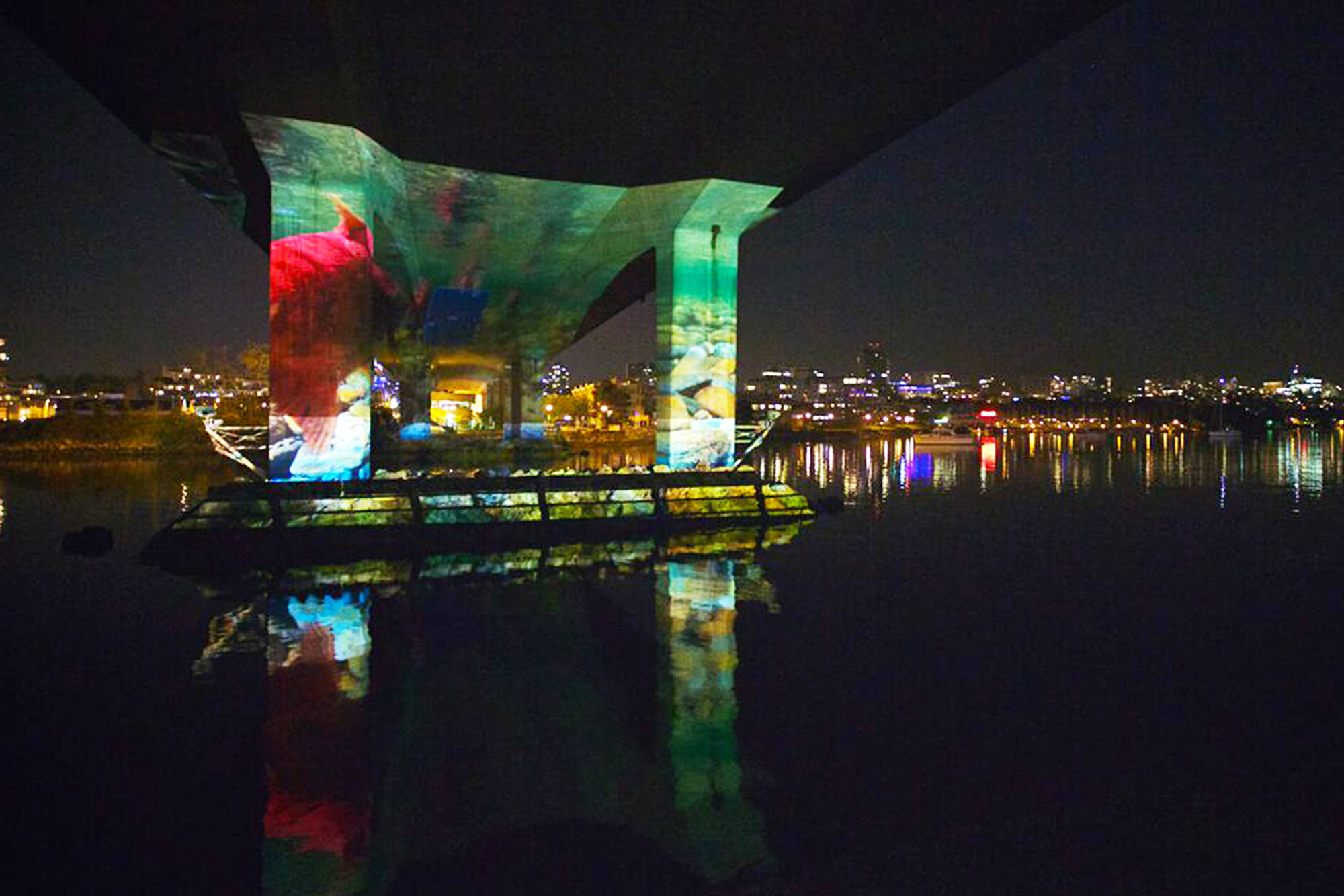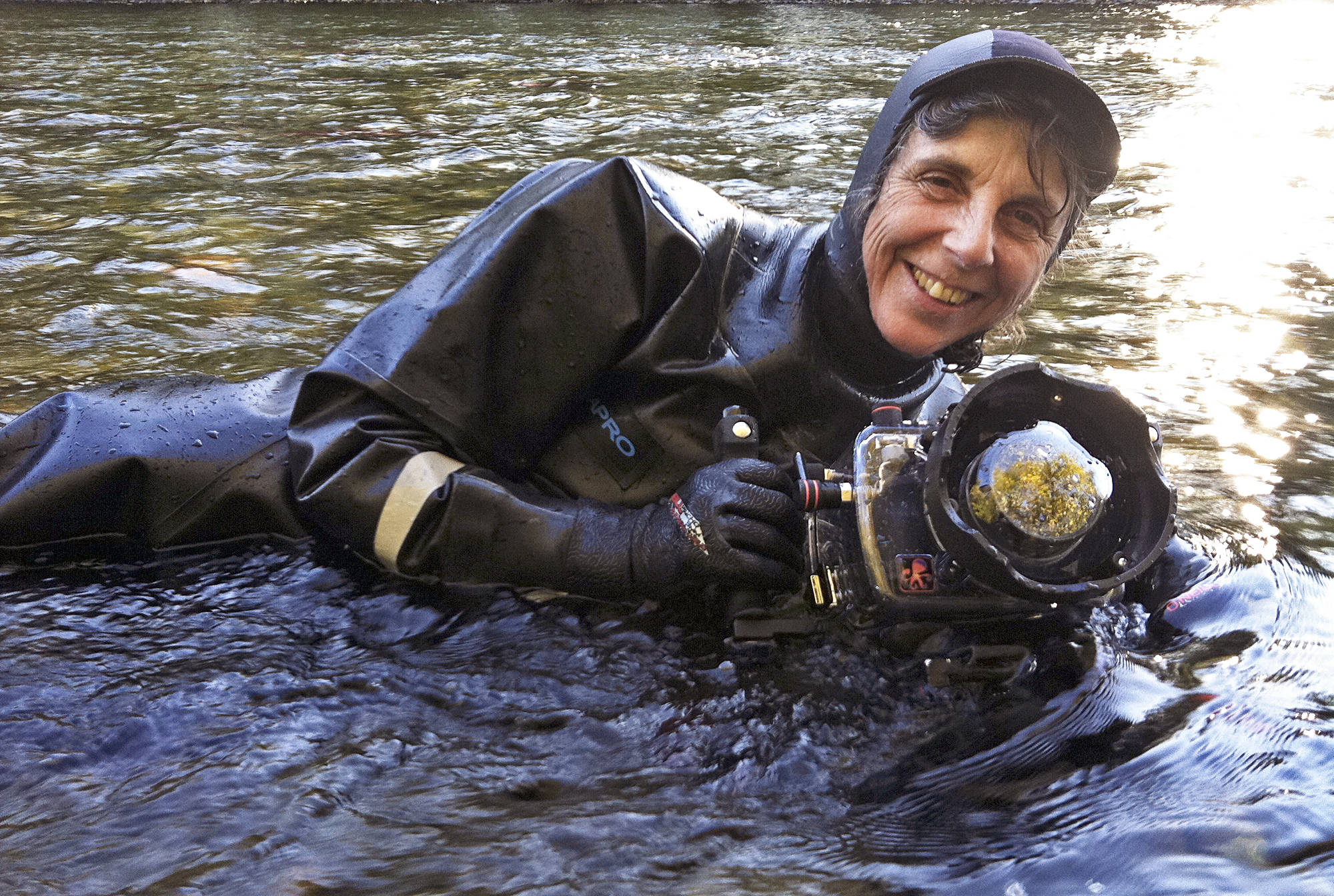This year, the migration of Adams River Sockeye will take a detour, a magical stop in Vancouver.
It was seven years ago, 2010, when internationally acclaimed documentary film director Nettie Wild witnessed a spectacle that, as she puts it, changed her life.
Wild, from Vancouver, was one of the more than 160,000 people who made their way to the Shuswap to stand on the banks of the Adams River that year. There, she witnessed the incredible run of close to four million sockeye salmon who had journeyed more than 600 kilometres from the Pacific Ocean to spawn.
“I was completely and utterly overwhelmed. It changed my life. I was so stunned by what I saw… For me to see a run of that magnitude was beyond belief. I felt I was witnessing a moment when the world was right… It was exhilarating.”
Then, aside from the sheer force of nature, as an artist she saw something else.
“When I looked down into the pool of extraordinary circling green and red, I saw patterns of colossal moving contemporary art. As an artist, I thought, can I possibly work with this?”
And so her journey began. It would sweep her along towards the creation of Uninterrupted, a monumental and innovative public spectacle – the high-tech projection of footage of the Adams’ River sockeye run onto Vancouver’s Cambie Street bridge, which spans Burrard Inlet and False Creek. Fittingly, she says, False Creek once teemed with salmon.
Viewing will take place from Coopers’ Park at the bridge’s north end, five nights a week, 10 p.m., Tuesday through Saturday, from June 28 to Sept. 24. On Aug. 15, the time will drop to 9 p.m. Viewing is free and family friendly. Eight hundred people per night, standing, will be able to experience the cinematic spectacle. An accessible viewing area is available.
Wild and her Canada Wild Productions, with producer Betsy Carson, have produced several internationally acclaimed films, but none like this.
Projecting onto the legs of the bridge and its entire underbelly has required “very, very cutting edge” – or “bleeding edge” – technology, as her editor calls it – essentially making up rules as they go along.
“The bridge has all these different surfaces, and the salmon have a mind of their own. A cast of millions, all of whom have their own minds. It’s thrilling and really hard,” she smiles.
Essential to the process has been what Wild describes as “one of the world’s most special cameras.”
While an ordinary camera would shoot 24 frames per second, this one takes 2,000. Donated, and installed in underwater housing, it weighs 150 pounds.
“Underwater, it’s a whole other extraordinary world of movement and light. To film underwater is heaven….” she enthuses.
Wild relays how a couple of fish spawning will have a dust-up.
“It happens as fast as it takes to click your fingers, but makes 30 to 40 seconds of amazing cinema. It’s a whole domestic drama playing out; they carve the water with their fins and tails…”
Making her journey of discovery possible were the people on the river who welcomed her and her crew into their traditional territory. First Nations people have a deep understanding and connection with salmon, she acknowledges. “They live it.”
Along with the Adams River, over seven years she also filmed on the Sproat and Pitt rivers. Several First Nations were behind the project, including Little Shuswap and Neskonlith. The staff at Roderick Haig-Brown Provincial Park and the Adams River Salmon Society were also a huge help, she says, explaining that an “incredible army of people” have made the project possible.
The Thomas family allowed the voice of late Neskonlith elder Mary Thomas to be used in the 25-minute film. Although there is no narration, says Wild, the film “uses her voice as the spirit of the river, telling the story of the salmon in her language.”
The film is a celebration, she emphasizes, not a science lecture.
“It is a celebration that contemplates water, current, light, fish and even the city. It’s not setting up cities as an opponent.”
A short animated teaser runs beforehand.
“It’s a time when we thank various First Nations, funders, and there’s also a little surprise on the bridge. If you go to our website and if you actively engage with funders who are restoring habitat, your name will end up on the bridge.”
Her hope for the cinematic spectacle is that it imbues the kind of wonder that the sockeye run itself does.
“We are crystal clear and humble about what our objectives are. Our job as artists is to create a cinematic experience that takes people to a place they’ve never been before…
“I’m hoping it will trigger curiosity which will lead them to our website (uninterrupted.ca) and there they will find truly extraordinary people. It’s where people can go to help create a habitat more sustainable for sockeye in lots and lots of ways.”
Wild is hopeful people from the Shuswap will “migrate downriver” to come see the Adams River sockeye in their cinematic habitat.
Why the name, Uninterrupted?
“When I was standing on the banks of that river, I was really moved by something that has been going on since time immemorial, uninterrupted. If we as human beings cared, know enough to care, we can ensure they can swim uninterrupted into the future.”


